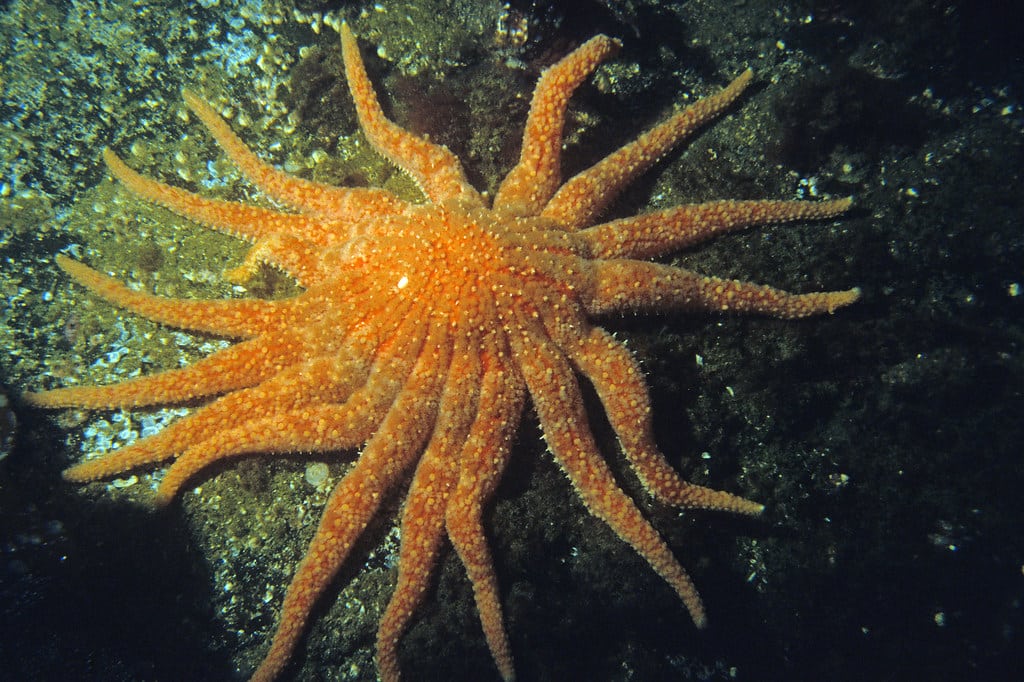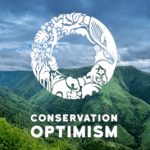Wondering what went right this week in the conservation world? We’ve got you covered with our Conservation Optimism Round-Up! Each week we are collating stories of optimism from around the globe so that you never miss your dose of Monday Motivation.
1. The mid-air walkways saving endangered animals
“Conservationists have come up with an ingenious way to help an endangered species – the Javan slow loris. They’ve built a network of mid-air walkways to help them move between treetops, across land that has been cleared for growing crops.”
The mid-air walkways saving endangered animals - great piece by @littlefireface. Contains footage taken when I was out at the project in Java. Vital work to save this beautiful species - well done all involved #ConservationOptimism https://t.co/aOJ0KWtv8Z
— Dan Geerah (@DanGeerah) May 16, 2021
2. A starfish is born: hope for key species hit by gruesome disease
“Scientists in a San Juan Island laboratory in Washington state have successfully raised sunflower sea stars, or starfish, in captivity for the first time, in an effort to help save these charismatic ocean creatures from extinction.”
Scientists have successfully bred the critically endangered sunflower sea star in captivity for the first time, after their numbers crashed by 90% 🥳⭐
— Josh Luke Davis 🏳️🌈 (@JoshLukeDavis) May 15, 2021
A little bit of #ConservationOptimism to brighten your Saturday afternoon.https://t.co/pAfo61FT49
3. Conservation Successes in Madagascar! Spotlight on: the Mad Dog Initiative
“The Mad Dog Initiative works in villages surrounding Ranomafana and Andasibe national parks to spay/neuter and vaccinate domestic and feral dogs as a way of managing and reducing the threat they pose to wild lemurs.”
4. The population of critically endangered Nubian giraffe is thriving in Kidepo Valley National Park in Uganda after a successful translocation program.
“The Uganda Wildlife Authority (UWA) and the Giraffe Conservation Foundation (GCF) joined forces again for Operation Twiga III in August 2018 (twiga is Swahili for giraffe). Since then, the population has continued to increase and thrive “
5. Meet this year’s recipients of world-leading prizes for grassroots wildlife conservation- the 2021 Whitley Award winners
“Recipients of the award include programs from Kenya, South Africa, Brazil, India, Argentina and Nigeria. Each winner receives £40,000 in project funding, international media attention and training.”
🌟 Congratulations to the conservation heroes who received 2021 Whitley Awards last night! 🌟
— Synchronicity Earth (@SynchEarth) May 13, 2021
🇰🇪🐘 @paulakahumbu
🇿🇦🪶 Lucy Kemp
🇧🇷🐬 Pedro Fruet
🇮🇳🌳 Nuklu Phom
🇦🇷🪶 @kinipolegus
🇳🇬🦇 @IroroTanshi
🇰🇪🐢 Sammy Safarihttps://t.co/FhjIZTDbgs #RootToRecovery #ConservationOptimism
6. Forests the size of France regrown since 2000, study suggests
“The restored forests have the potential to soak up the equivalent of 5.9 gigatonnes (Gt) of carbon dioxide – more than the annual emissions of the US, according to conservation groups. A team led by WWF used satellite data to build a map of regenerated forests.”
William Baldwin-Cantello of WWF said natural forest regeneration is often "cheaper, richer in carbon and better for biodiversity than actively planted forests".https://t.co/TyEetJdUsg#ConservationOptimism
— Jamie Gordon (@AmazonWWF_UK) May 11, 2021
7. New Australian marine parks protect area twice Great Barrier Reef’s size
“The two parks will be established around Christmas Island and the Cocos (Keeling) Islands in the Indian Ocean to the northwest of continental Australia. The new parks cover 740,000 square kilometers (286,000 square miles) of ocean.”
The Australian government has moved to create two new marine protected areas that cover an expanse of ocean twice the size of the Great Barrier Reef Marine Park! #ConservationOptimismhttps://t.co/pgNH86mKGA
— SCB (@Society4ConBio) May 14, 2021
Have a story to share for our weekly round-up? Use #ConservationOptimism on Twitter, Facebook, LinkedIn and Instagram!


